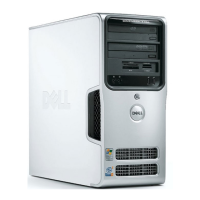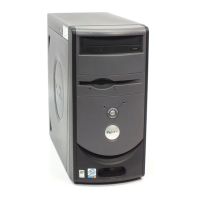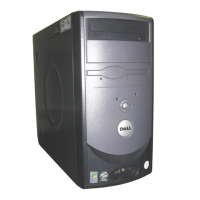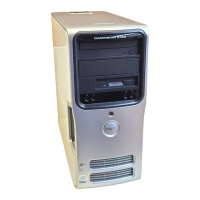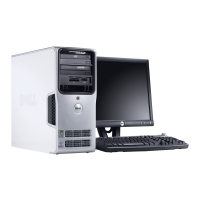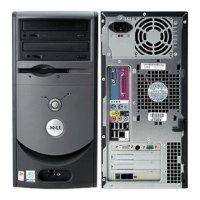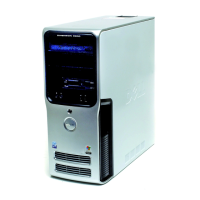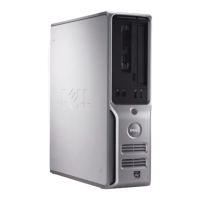150 Glossary
bus — A communication pathway between the
components in your computer.
bus speed — The speed, given in MHz, that indicates how
fast a bus can transfer information.
byte — The basic data unit used by your computer. A byte
is usually equal to 8 bits.
C
C — Celsius — A temperature measurement scale where
0° is the freezing point and 100° is the boiling point of
water.
cache — A special high-speed storage mechanism which
can be either a reserved section of main memory or an
independent high-speed storage device. The cache
enhances the efficiency of many processor operations.
L1 cache — Primary cache stored inside the processor.
L2 cache — Secondary cache which can either be external
to the processor or incorporated into the processor
architecture.
carnet — An international customs document that
facilitates temporary imports into foreign countries. Also
known as a merchandise passport.
CD-R — CD recordable — A recordable version of a CD.
Data can be recorded only once onto a CD-R. Once
recorded, the data cannot be erased or written over.
CD-RW — CD rewritable — A rewritable version of a
CD. Data can be written to a CD-RW disc, and then
erased and written over (rewritten).
CD-RW drive — A drive that can read CDs and write to
CD-RW (rewritable CDs) and CD-R (recordable CDs)
discs. You can write to CD-RW discs multiple times, but
you can write to CD-R discs only once.
CD-RW/DVD drive — A drive, sometimes referred to as a
combo drive, that can read CDs and DVDs and write to
CD-RW (rewritable CDs) and CD-R (recordable CDs)
discs. You can write to CD-RW discs multiple times, but
you can write to CD-R discs only once.
clock speed — The speed, given in MHz, that indicates
how fast computer components that are connected to the
system bus operate.
COA — Certificate of Authenticity — The Windows
alpha-numeric code located on a sticker on your
computer. Also referred to as the Product Key or
Product ID.
Control Panel — A Windows utility that allows you to
modify operating system and hardware settings, such as
display settings.
controller — A chip that controls the transfer of data
between the processor and memory or between the
processor and devices.
CRIMM — continuity rambus in-line memory module
— A special module that has no memory chips and is used
to fill unused RIMM slots.
cursor — The marker on a display or screen that shows
where the next keyboard, touch pad, or mouse action will
occur. It often is a blinking solid line, an underline
character, or a small arrow.
D
DDR SDRAM — double-data-rate SDRAM — A type of
SDRAM that doubles the data burst cycle, improving
system performance.
DDR2 SDRAM — double-data-rate 2 SDRAM — A type
of DDR SDRAM that uses a 4-bit prefetch and other
architectural changes to boost memory speed to over
400 MHz.
device — Hardware such as a disk drive, printer, or
keyboard that is installed in or connected to your
computer.
device driver — See driver.
DIMM — dual in-line memory module — A circuit board
with memory chips that connects to a memory module on
the system board.
DIN connector — A round, six-pin connector that
conforms to DIN (Deutsche Industrie-Norm) standards;
it is typically used to connect PS/2 keyboard or mouse
cable connectors.
disk striping — A technique for spreading data over
multiple disk drives. Disk striping can speed up operations
that retrieve data from disk storage. Computers that use
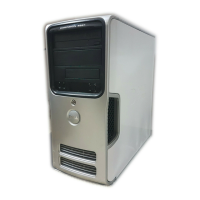
